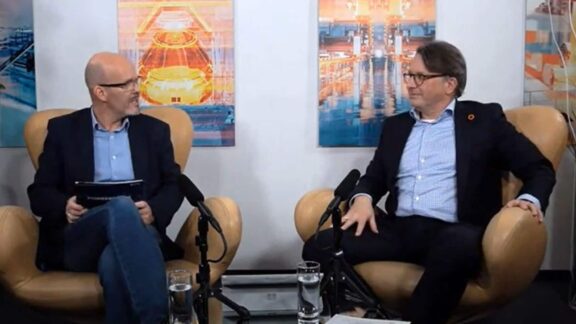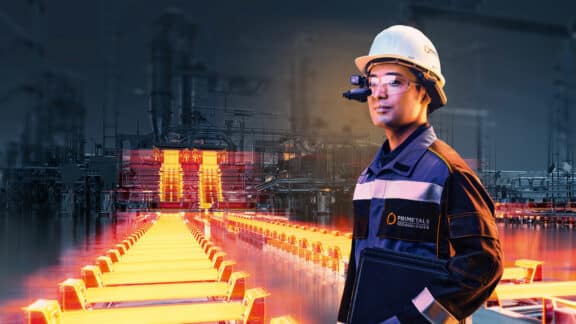Kurt Herzog is Head of Industry 4.0 at Primetals Technologies. He has been with the company for 20 years and focuses on automation efforts that make the total complexity of steel-plant operation more manageable. Herzog also leads the team that created the “Metals Orchestra” concept. Metals Magazine finds out what continues to drive him in his daily work.

What inspired you to craft the concept of the “Metals Orchestra?”
Kurt Herzog: I wanted to capture the idea that in a steel plant, all parts of the production chain have to be in proper alignment to ensure streamlined operation. A production facility is much like an orchestra: All “players” need to be highly capable, and there can be no weak link. If any one unit fails, costs will arise due to production losses or a decrease in end-product quality. Also, it is essential to orchestrate all equipment so that everything acts in harmony—hence the necessity for a “conductor.” What I particularly like about this metaphor is that it illustrates what I call the “three layers of integration”: Vertical integration means that every player has to perform well on his own; horizontal integration means that all efforts need to be well aligned; and integration over time involves all the behind-the-scenes service and maintenance work required for smooth plant operation.
It is often stated that metals producers have already embraced digitalization, much more than businesses in other areas; for instance, in discrete manufacturing. Do you agree with this view?
Herzog: Well, it depends. Some aspects of digitalization have actually already been implemented in discrete manufacturing. But what is still unique to the steel industry is the use of cyber-physical systems. A cyber-phyiscal system is the combination of a physical production facility with its virtual representation, its “digital twin.” In steel production, the use of process models has been indispensable for decades now, because it is the only way to determine what state certain equipment is in. To give you an example, it is impossible to take certain measurements from within an active blast furnace. Only sophisticated process models can give us a good idea of how changes we make in operational practices or in raw materials will influence the smelting process. The same is true for the solidification of the caster strand, the violent reaction to oxygen in the converter, or the forceful shaping of the steel during rolling. These process models are essential for both controlling the production process and for safety, and they are without equal in other industries.
Why then is digitalization still such a big issue—and a major challenge—for the metals industry?
Herzog: In the manufacturing of steel, every single step of the production chain is a complex system in itself—from the sinter plant to the processing line. At the same time, the overall process should be executed with as little interruption and delay as possible in order to minimize energy consumption and costs. As a result, the challenge is to orchestrate all of these systems and bring their automation into continual alignment. The good news is that it is relatively inexpensive for steel producers to implement new automation solutions, compared to the costs of the production equipment. And once interaction of all automation systems is reached, the achievable end-products will be higher in quality and more profitable. However, when upgrading steel plants with already respectable degrees of automation, our challenge is different: in these cases, we often have to integrate various types of equipment that came from different suppliers.
Has the concept of the “Metals Orchestra” helped in communicating the importance of digitalization?
Herzog: I think that it has successfully conveyed that integration in steel plants needs to happen in three dimensions—vertically, horizontally, and over time. Actually, integration can go far beyond just the production process and include suppliers and end customers. For literally any steel producer, digitalization has enormous potential. It can increase productivity, flexibility, and product quality. And since the steel industry is still going through tough times, improvements in these areas are extremely important. They will help to ensure that steel remains a competitive base material in the decades ahead.
Out of all the technologies involved in promoting digitalization in steel production, which is your favorite? Do you have a “preferred soloist” in your “orchestra of steel?”
Herzog: Today, my preferred soloist is Arvedi Endless Strip Production technology [smiles]. There is one simple reason why: Arvedi ESP is not limited to merely digitalizing a distinct set of processes or one production step. It unifies continuous casting and hot rolling, and it does this not just in software but also in the world of nuts and bolts. The two stages are literally and physically made into one. In my opinion, Arvedi ESP is a new and exiting form of horizontal integration.
Is artificial intelligence a substantial factor in your Metals Orchestra?
Herzog: First off, it is important to differentiate between data analytics and artificial intelligence (AI), and at Primetals Technologies we use both. Having said that, AI is certainly a factor in digitalization, even if some of its applications have yet to be developed, tested, and refined. It can, for instance, help to increase end-product quality. From a safety and a legal standpoint, however, AI is not without problems. The architecture of AI systems is based on non-causal learning. So whenever AI is put in charge, it becomes impossible to explain how the system arrived at its conclusions and why it made the decisions it did. But safety standards depend on clear instructions and causal rule sets. How larger AI systems will be integrated into steel production has yet to be figured out.
My final question is a personal one: do you play an instrument yourself?
Herzog: Yes, I play the guitar, the electric bass, and the saxophone. I also like to try out new instruments to see what sounds I can evoke from them. Occasionally, I play in a group, and I know very well how important proper orchestration is for the quality of the music.


